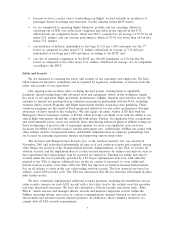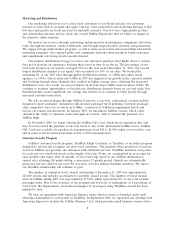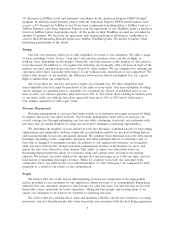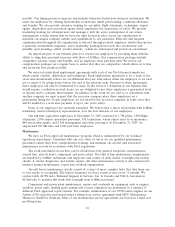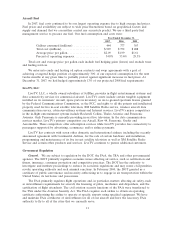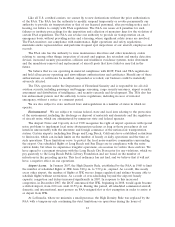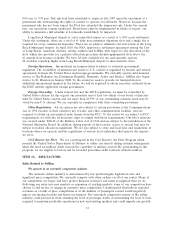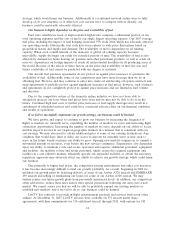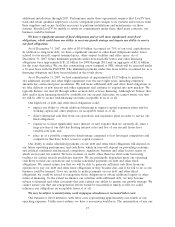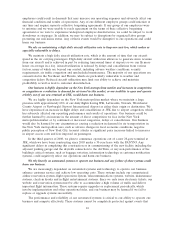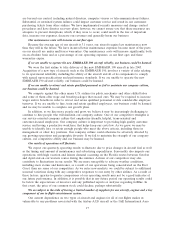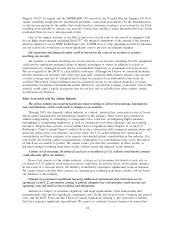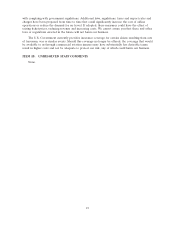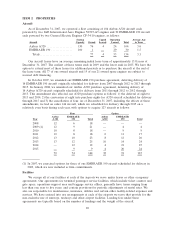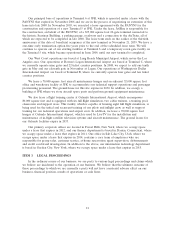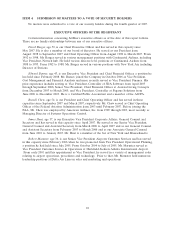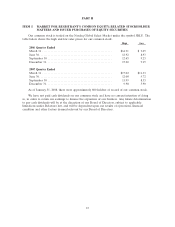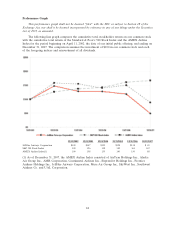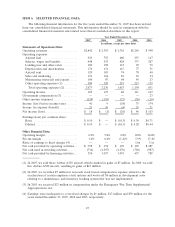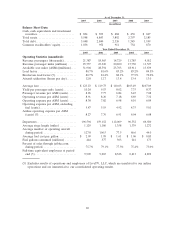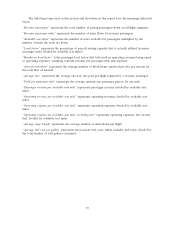JetBlue Airlines 2007 Annual Report Download - page 27
Download and view the complete annual report
Please find page 27 of the 2007 JetBlue Airlines annual report below. You can navigate through the pages in the report by either clicking on the pages listed below, or by using the keyword search tool below to find specific information within the annual report.are beyond our control, including natural disasters, computer viruses or telecommunications failures.
Substantial or sustained system failures could impact customer service and result in our customers
purchasing tickets from other airlines. We have implemented security measures and change control
procedures and have disaster recovery plans; however, we cannot assure you that these measures are
adequate to prevent disruptions, which, if they were to occur, could result in the loss of important
data, increase our expenses, decrease our revenues and generally harm our business.
Our maintenance costs will increase as our fleet ages.
Because the average age of our aircraft is 3.1 years, our aircraft require less maintenance now
than they will in the future. We have incurred lower maintenance expenses because most of the parts
on our aircraft are under multi-year warranties. Our maintenance costs will increase significantly, both
on an absolute basis and as a percentage of our operating expenses, as our fleet ages and these
warranties expire.
If we are unable to operate the new EMBRAER 190 aircraft reliably, our business could be harmed.
We were the first airline to take delivery of the new EMBRAER 190 aircraft in late 2005.
Acquisition of a new type of aircraft, such as the EMBRAER 190, involves a variety of risks relating
to its operational reliability, including the ability of the aircraft and all of its components to comply
with agreed upon specifications and performance standards. If we are unable to operate the new
EMBRAER 190 aircraft reliably, our business could be harmed.
If we are unable to attract and retain qualified personnel or fail to maintain our company culture,
our business could be harmed.
We compete against the other major U.S. airlines for pilots, mechanics and other skilled labor
and some of them offer wage and benefit packages that exceed ours. We may be required to increase
wages and/or benefits in order to attract and retain qualified personnel or risk considerable employee
turnover. If we are unable to hire, train and retain qualified employees, our business could be harmed
and we may be unable to complete our growth plans.
In addition, as we hire more people and grow, we believe it may be increasingly challenging to
continue to hire people who will maintain our company culture. One of our competitive strengths is
our service-oriented company culture that emphasizes friendly, helpful, team-oriented and
customer-focused employees. Our company culture is important to providing high quality customer
service and having a productive workforce that helps keep our costs low. As we grow, we may be
unable to identify, hire or retain enough people who meet the above criteria, including those in
management or other key positions. Our company culture could otherwise be adversely affected by
our growing operations and geographic diversity. If we fail to maintain the strength of our company
culture, our competitive ability and our business may be harmed.
Our results of operations will fluctuate.
We expect our quarterly operating results to fluctuate due to price changes in aircraft fuel as well
as the timing and amount of maintenance and advertising expenditures. Seasonality also impacts our
operations, with high vacation and leisure demand occurring on the Florida routes between October
and April and on our western routes during the summer. Actions of our competitors may also
contribute to fluctuations in our results. We are more susceptible to adverse weather conditions,
including snow storms and hurricanes, as a result of our operations being concentrated on the East
Coast, than are some of our competitors. As we enter new markets, we could be subject to additional
seasonal variations along with any competitive responses to our entry by other airlines. As a result of
these factors, quarter-to-quarter comparisons of our operating results may not be a good indicator of
our future performance. In addition, it is possible that in any future period our operating results could
be below the expectations of investors and any published reports or analyses regarding JetBlue. In
that event, the price of our common stock could decline, perhaps substantially.
We are subject to the risks of having a limited number of suppliers for our aircraft, engines and a key
component of our in-flight entertainment system.
Our current dependence on two types of aircraft and engines for all of our flights makes us
vulnerable to any problems associated with the Airbus A320 aircraft or the IAE International Aero
17


